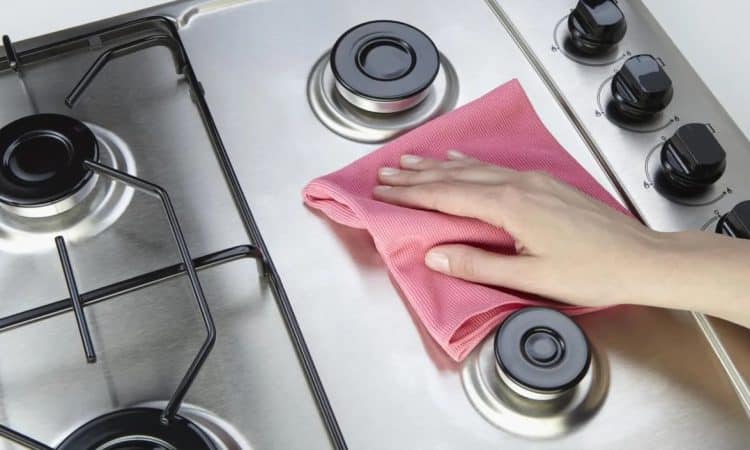Say Goodbye to Dishcloth Stains: Grandma’s Easy Trick for Spotless Cleanliness in Seconds

This easy and effective method ensures that your cloths are always ready to face any cleaning task at home.
We all know that cloths are one of our best friends when it comes to cleaning the home. But, let’s be honest, keeping them in perfect condition can be quite a challenge!
We all know how it goes. Dirt and germs build up, and before we know it, we’ve thrown them away. Washing them in the washing machine is usually not kind, and it can even damage them. So, it’s no surprise that we often find ourselves needing to buy a new set.
However, the solution to this problem lies in a little trick that allows you to clean the cloths easily and without the need of a washing machine. In this way, you will get them as good as new and they can help you when it comes to deep cleaning different areas and objects in the home.
Regardless of what items and cleaning tasks they are used for, it is necessary to soak the cloths in a substance that allows them to remain perfect, and for this it is enough to fill a container with hot water, half a glass of cleaning vinegar and a splash of active oxygen.
Once this solution has been prepared, the cloths should be soaked in it overnight, so that a color change in the water will be visible the next day, which means that the dirt has been absorbed. The next day it will be enough to wring out the cloths to appreciate how they are like new, being a simple and effective method to extend the useful life of these essential elements of cleaning.
Other tips for cleaning and disinfecting cloths
Cloths are essential tools as part of any cleaning kit, both at home and in the professional field. In order to maintain their effectiveness and prolong their useful life as much as possible, they need to be cleaned and disinfected in the right way, and for this, beyond the aforementioned trick, there are other options for cleaning and disinfecting microfiber and cotton cloths, so that it is possible to ensure that they can fulfill their purpose perfectly.
Microfiber cloths
Microfiber cloths are known for their ability to attract dust and dirt without leaving lint and dirt traces on surfaces. To clean and disinfect them properly, the following recommendations should be taken into account:
- Frequent washing: due to their dense structure, these cloths can retain a large amount of dirt, so it is recommended to wash them after each use or at least once a week if they are used regularly.
- Machine wash: these cloths can be machine washed using a mild detergent and warm water, but avoid using fabric softener, as it may leave residues that reduce their absorption capacity.
- Do not wash with other fabrics: when they are to be washed, they should not be mixed with other fabrics, especially if they create lint, which could also affect their effectiveness.
- Airdry: once washed, microfiber cloths should be left to air dry rather than tumble dried, which helps to maintain their softness and absorbency.
- Additional disinfection: to disinfect them, one recommendation is to soak these cloths in a solution of water and white vinegar for a few minutes before washing as usual.
Cotton cloths
In the case of cotton cloths, which stand out for their versatility and durability, but need specific care to remain effective, it is advisable to take into account these recommendations for cleaning and disinfection:
- Wash in hot water: for the elimination of both dirt and germs that may have been impregnated in a cotton cloth, it is advisable to wash them in hot water with detergent. Hot water effectively removes grease and residues and helps to kill bacteria.
- Fabric safe bleach: if the cloths are heavily soiled or require further disinfection, it is possible to add a little fabric bleach to the wash cycle, but in any case follow the manufacturer’s instructions and dilute it appropriately.
- Thorough drying: after washing, it is essential to ensure that cotton cloths are completely dry before storing them, as residual moisture could cause bacteria and mildew to proliferate.
- Wash separately: as with microfiber cloths, they should be washed separately from other fabrics to prevent the transfer of dirt and bacteria.
- Regular replacement: Although cotton cloths have a long life span, it is important to replace them regularly, especially if they show signs of wear or odor that does not disappear after washing.
By following these simple but effective tips, you will be able to keep both microfiber cloths and cotton cloths in optimal condition, ensuring that they are in the best possible condition to be able to perform any household cleaning task with the greatest efficiency.
In any case, it is important to emphasize the importance of regular cleaning to prolong their useful life, but also to achieve a cleaner and healthier environment, making them perform their task better.

